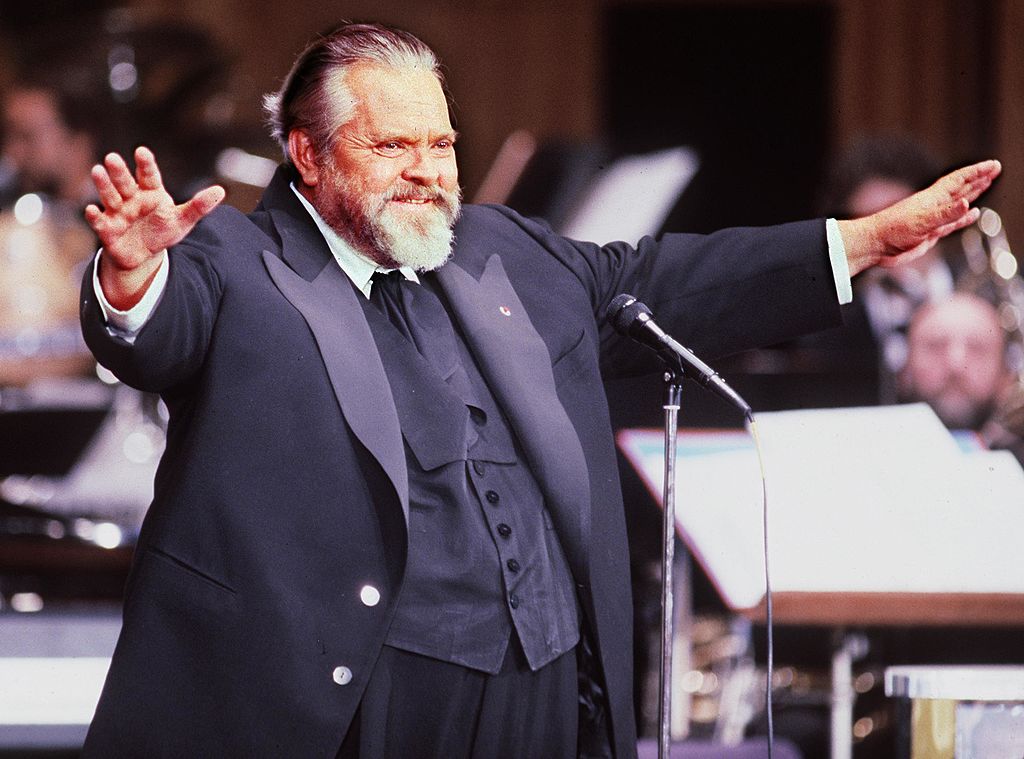The Other Side of the Wind: Netflix brings Orson Welles's unfinished final film to the screen after 48 years
Master filmmaker's long goodbye finally completed after decades of legal wrangling
Orson Welles's unfinished final film, The Other Side of the Wind, is finally coming to the screen, almost half a century after cameras first rolled on the project.
Netflix overcame legal obstacles long dismissed as insurmountable to secure the rights in March last year and hired a crack team to assemble the hours of lost footage; their work is free to stream on the site from Friday 2 November following successful premieres at the Venice and Telluride film festivals.
The one-time enfant terrible of American theatre and radio, Orson Welles shot to fame around the world in 1941 with the release of his first feature film, Citizen Kane, written, directed by and starring the auteur at the age of just 26.
Depicting the rise and fall of a newspaper tycoon based on William Randolph Hearst, Kane would top Sight & Sound magazine's poll of the greatest films of all time for decades.
His next project, an adaptation of Booth Tarkington's 1918 novel The Magnificent Ambersons, would be butchered in the editing suite after RKO executives lost faith in Welles. Almost every picture he embarked upon thereafter would become mired in power struggles and funding shortfalls.
This did not stop the remarkable filmmaker from completing a number of classics, from The Stranger (1946) and The Lady from Shanghai (1947) to Touch of Evil (1958) and F for Fake (1973), but his reputation as untrustworthy was gradually set in stone.
The Other Side of the Wind, commenced in August 1970, is effectively a mockumentary recording the last day in the life of ageing movie director Jack Hannaford (John Huston), a hard-drinking, Hemingwayesque character struggling to come to terms with the demise of the studio system and the arrival of the New Hollywood.
Hannaford is (ironically) struggling to complete a film of his own, an experimental art house movie that has run aground over tensions between the director and his leading man.
The film-within-a-film sees Welles spoof the contemporary vogue for Michelangelo Antonioni while The Other Side of the Wind as a whole is loaded with knowing cameos from the likes of Peter Bogndanovich, Mercedes McCambridge, Edmond O'Brien, Dennis Hopper and Claude Chabrol as Hollywood hangers-on.

Watch Apple TV+ free for 7 day
New subscribers only. £9.99/mo. after free trial. Plan auto-renews until cancelled.
ADVERTISEMENT. If you sign up to this service we will earn commission. This revenue helps to fund journalism across The Independent.

Watch Apple TV+ free for 7 day
New subscribers only. £9.99/mo. after free trial. Plan auto-renews until cancelled.
ADVERTISEMENT. If you sign up to this service we will earn commission. This revenue helps to fund journalism across The Independent.

While principal photography wrapped on the film in January 1976, Welles's farewell has been trapped in post-production limbo for more than four decades over a bitterly fought and intensely complicated rights dispute.
As the original negatives languished in a vault in Paris, Welles's daughter Beatrice, the late director's partner Oja Kodar and investor Mehdi Bishehri, brother-in-law to the Shah of Iran, all found themselves embroiled in a nebulous legal battle for ownership.
Welles himself died in 1985, having only edited 40 minutes to his satisfaction, his later career given over to lucrative projects utterly beneath him like TV commercials for Paul Masson Chablis and voiceover work in Transformers: The Movie.
His faithful cinematographer Gary Graver fought valiantly for the completion of The Other Side of the Wind in his stead until he too passed away in 2006.
Graver had completed a two-hour rough cut at one stage, which Kodar screened for influential Hollywood players including Steven Spielberg, George Lucas, Clint Eastwood and Oliver Stone in the late 1980s and early 1990s but none choose to take on the project.
As a deal with the cable TV network Showtime came and went, veteran director Bogdanovich picked up the mantle but similarly struggled to break the legal deadlock.
The financial muscle of Netflix finally prevailed in 2017 and the company agreed a deal with Kodar, a Croatian sculptor who co-wrote the film and appears in it as a Native American radical, whose signature gave the streaming giant access to more than a thousand reels of celluloid and nearly a hundred hours of footage.
Bogdanovich and producers Frank Marshall and Filip Jan Rymsza were joined by editor Bob Murawski and sound mixer Scott Millan to piece the picture together.

French composer Michael Legrand, 86, was commissioned to provide the score while directors Quentin Tarantino, Paul Thomas Anderson and Rian Johnson all gave notes on the finished film.
Whether Welles himself would have approved of the final cut will never be known but what is certain is how much he would have enjoyed the chaos The Other Side of the Wind has left in its wake.
Join our commenting forum
Join thought-provoking conversations, follow other Independent readers and see their replies
Comments
Bookmark popover
Removed from bookmarks